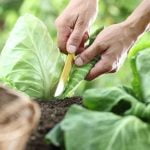Are you looking for landscape design ideas for small gardens? Designing a small garden comes with unique challenges and considerations, but with the right techniques, you can create a beautiful and functional outdoor space. In this article, we will explore creative ways to maximize space, choose the right plants, incorporate hardscaping elements, and more to help you transform your small garden into a stunning oasis.
When it comes to designing a small garden, space is at a premium. Understanding how to work with limited space while still creating a visually appealing and functional landscape is essential. From maximizing layout and arrangement options to utilizing vertical gardening techniques, there are plenty of design ideas that can make your small garden feel larger and more inviting.
In addition to layout and arrangement, choosing the right plants for a small garden is crucial. Low-maintenance and space-saving plant options can help keep your garden looking vibrant without overwhelming the limited space available. With careful selection and placement, you can create a beautiful green space that thrives in your small garden.
Maximizing Space
When it comes to designing a small garden landscape, maximizing space is essential. With limited square footage, it’s important to get creative with the layout and arrangement of plants, furniture, and functional elements. By utilizing every available inch of space, you can create a beautiful and functional outdoor oasis, no matter how small your garden may be.
Creative Planting Layouts
One effective way to maximize space in a small garden is by using creative planting layouts. Consider utilizing raised beds or planting in containers to add layers and dimension to your garden. You can also try incorporating vertical planters or trellises to take advantage of vertical space while keeping the ground area open for pathways or seating areas.
Functional Furniture Arrangements
In addition to plants, the layout of furniture plays a crucial role in making the most of a small garden space. Choose compact and multi-functional furniture pieces that can serve multiple purposes. For example, opt for a bench with built-in storage or a bistro set that can be easily folded and stored when not in use. Strategic placement of furniture can help create different zones within the garden for dining, lounging, or entertaining.
Clever Use of Pathways
Pathways not only provide practical access to different areas of the garden but also contribute to its design aesthetic. In a small garden, consider using winding pathways made from materials like gravel, stepping stones, or wood chips. These pathways can add visual interest and create an illusion of depth while leading the eye throughout the garden. Additionally, curved pathways tend to make a space feel larger than straight ones, giving the impression of more square footage in a small area.
By implementing these creative layouts and arrangements in your small garden landscape, you can make the most out of limited space while still creating an inviting and visually appealing outdoor retreat.
Choosing the Right Plants
When it comes to landscape design ideas for small gardens, choosing the right plants is crucial for maximizing space and minimizing maintenance. Here are some low-maintenance and space-saving options to consider for your small garden:
1. Succulents and Cacti: These plants are not only low-maintenance but also visually striking. They require minimal water and are perfect for small garden spaces.
2. Dwarf Shrubs and Trees: Opt for compact varieties of shrubs and trees that won’t outgrow your small garden. Look for species that can be pruned into shape and size, allowing you to control their growth.
3. Ground Covers: Instead of traditional grass, consider using ground covers like creeping thyme or moss. These plants not only add greenery but also help to prevent soil erosion and reduce the need for mowing.
In addition to these plant options, consider incorporating herbs and edible plants into your small garden landscape. Not only do they serve a dual purpose of providing fresh ingredients for cooking, but they also add visual interest and fragrance to the space.
When selecting plants for a small garden, it’s essential to consider their mature size, growth habits, and maintenance requirements. By choosing the right plants, you can create a beautiful and thriving garden without feeling overwhelmed by upkeep.
Remember, a well-chosen selection of plants will ensure that your small garden remains visually appealing while requiring minimal maintenance over time. With these low-maintenance and space-saving plant options in mind, you can transform your small garden into a lush oasis that is easy to care for and enjoy year-round.
Vertical Gardening
When working with a small garden, one of the most effective landscape design ideas is to utilize vertical space for greenery and color. By incorporating vertical gardening techniques, you can maximize the use of limited ground space and create a visually appealing garden.
Vertical Planters and Trellises
One popular method of vertical gardening is to install planters or trellises on walls or fences. This allows you to grow climbing plants such as ivy, jasmine, or roses, bringing a burst of color and fragrance to your small garden. Additionally, hanging planters can be used to grow herbs or trailing flowers, adding interest and functionality to your vertical garden space.
Living Walls
Another innovative way to incorporate vertical gardening into your small garden landscape is by creating a living wall. This involves installing a structure with pockets or containers for planting, which can be filled with a variety of plants to create a lush and vibrant display. Living walls not only add visual interest but also contribute to better air quality and insulation for your outdoor space.
Vertical Garden Structures
For those who want to take their vertical gardening to the next level, consider installing structures such as pergolas or arches that can support climbing plants. These structures not only provide an aesthetic focal point in your small garden but also create height and dimension in an otherwise limited space.
By implementing these vertical gardening ideas, you can transform even the smallest of outdoor areas into a beautiful and functional oasis. Whether you choose to use trellises, living walls, or structural supports, incorporating vertical elements into your small garden landscape will allow you to make the most of every inch of space available.
Incorporating Hardscaping
When it comes to small garden landscapes, hardscaping plays a crucial role in maximizing the use of space while adding functionality and visual appeal. Here are some ideas for incorporating hardscaping elements into your small garden:
1. Pathways: Create a sense of structure and organization in your small garden by adding pathways made of materials such as gravel, stepping stones, or even recycled bricks. These pathways not only provide easy access to different areas of the garden but also add an interesting design element.
2. Small Patios: Even in a limited space, a small patio can serve as a relaxing outdoor retreat. Consider using materials like pavers or composite decking to create a cozy seating area where you can enjoy the beauty of your garden.
3. Functional Elements: In addition to paths and patios, consider adding functional elements like raised planters, trellises for vertical gardening, or even a compact storage shed if space allows. These elements not only enhance the usability of the space but also add character to your small garden.
Regardless of how you decide to incorporate hardscaping into your small garden, it’s important to carefully plan the layout to ensure that it complements the overall design and doesn’t overwhelm the limited space. With thoughtful consideration and creative execution, hardscaping can transform a small garden into a charming and functional outdoor oasis.
Focal Points
When it comes to designing a small garden, creating focal points can be key to add visual interest and make the space feel larger and more dynamic. One of the most effective ways to achieve this is by incorporating small-scale water features or sculptures into the landscape. These elements not only serve as eye-catching focal points but also add a sense of tranquility and beauty to the garden.
For small gardens, choosing the right water feature or sculpture is essential. Opting for smaller, more delicate pieces that complement the scale of the space is crucial in order to avoid overwhelming the garden. A small bubbling fountain, a miniature pond, or a sculptural piece can all work wonders in adding personality and charm to a small garden without taking up too much precious space.
In addition to choosing the right elements, placement is also important when creating focal points in a small garden. Placing a water feature or sculpture at the end of a pathway or in a central location can draw the eye and create a sense of depth and perspective.
Utilizing strategic placement can help maximize visual impact while making the most out of limited space. By carefully selecting and positioning these elements, homeowners can enhance their landscape design ideas for small gardens, transforming them into inviting and captivating outdoor spaces.
Lighting and Color
Small gardens may present a challenge when it comes to incorporating adequate lighting and color to make the space feel open and inviting. However, with the right landscape design ideas for small gardens, it is possible to illuminate and brighten up even the tiniest outdoor spaces.
One effective technique for adding lighting to a small garden is to incorporate solar-powered lights. These can be placed along pathways, in flower beds, or around seating areas to provide a soft and ambient glow in the evenings. Additionally, string lights or fairy lights can be hung from trees or draped along fences to add a magical and whimsical feel to the garden at night.
When it comes to adding color, small gardens can benefit from strategic plant choices and colorful accents. Opting for bright flowering plants such as geraniums, petunias, or marigolds can inject bursts of color throughout the garden. Similarly, using colorful pots and planters or incorporating decorative outdoor textiles like cushions or rugs can add pops of brightness even in small garden spaces.
In order to maintain a cohesive look while illuminating and brightening up a small garden space, it is important to carefully consider the placement of lighting and color elements. By strategically positioning lights and introducing color in select areas, it is possible to create an inviting and visually appealing atmosphere despite any size constraints.
| Landscape Design Ideas for Small Gardens | Lighting and Color: Illuminating and Brightening Up Small Garden Spaces |
|---|---|
| Incorporating solar-powered lights | Creating visual impact with bright flowering plants |
| Using string lights or fairy lights | Adding colorful pots and planters for pops of brightness |
| Carefully positioning lighting and color elements | Strategic use of decorative outdoor textiles like cushions or rugs |
Maintenance Tips
Maintaining a small garden may seem less daunting than caring for a larger outdoor space, but it still requires regular upkeep and attention to keep it looking its best. Here are some maintenance tips that can help you make the most of your small garden landscape.
First, it’s essential to stay on top of weeding and pruning in a small garden. With limited space, weeds can quickly take over and overshadow your plants, so regular weeding is crucial. Additionally, proper pruning will not only keep your garden looking tidy but also promote healthy growth for your plants.
Another important aspect of maintaining a small garden is proper watering and fertilizing. Since small gardens are more susceptible to drying out quickly, it’s important to monitor the moisture levels of the soil and water as needed. Using a slow-release fertilizer can also provide the necessary nutrients for your plants without overwhelming their small root systems.
Lastly, regular cleaning and tidying up can go a long way in keeping your small garden looking its best. This includes removing fallen leaves or debris, sweeping pathways, and keeping outdoor furniture or hardscaping elements clean and well-maintained.
Overall, with the right maintenance routine and care, you can ensure that your small garden remains vibrant and beautiful throughout the year.
| Maintenance Tips | Details |
|---|---|
| Weeding and Pruning | Regular weeding and pruning to keep the garden tidy and promote healthy growth. |
| Watering and Fertilizing | Monitor soil moisture levels, water as needed, and use slow-release fertilizer for proper nourishment. |
| Cleaning and Tidying Up | Regularly remove fallen leaves or debris, sweep pathways, and maintain outdoor furniture/hardscaping elements. |
Conclusion
In conclusion, designing a small garden may present its challenges, but with the right strategies and techniques, it can be transformed into a beautiful and functional outdoor space. By maximizing space through creative layouts and arrangements, choosing the right plants, incorporating vertical gardening, hardscaping, focal points, lighting and color, and regular maintenance, even the smallest of gardens can become an oasis of greenery and tranquility.
When it comes to landscape design ideas for small gardens, the key is to think creatively and make the most of every inch of space. From utilizing walls for vertical gardening to adding small patios or pathways for functional elements, every aspect of the garden should be carefully considered to optimize its potential.
Additionally, by selecting low-maintenance and space-saving plants, as well as implementing lighting to illuminate the space at night, a small garden can become a vibrant and inviting retreat.
The possibilities for transforming a small garden are endless – whether it’s creating a peaceful escape from the hustle and bustle of daily life or establishing a cozy gathering spot for entertaining friends and family. By incorporating these landscape design ideas for small gardens into their own outdoor spaces, readers will no doubt be inspired to embark on their own gardening journey and turn their compact landscapes into stunning havens of natural beauty.
Frequently Asked Questions
How Do You Layout a Small Garden?
When laying out a small garden, it’s important to first consider the space available and any specific needs or preferences regarding plants and features. Take into account factors such as sunlight, water access, and desired aesthetics to plan out the layout effectively.
How Do You Arrange Plants in a Small Garden?
When arranging plants in a small garden, it’s crucial to prioritize proper spacing to avoid overcrowding. Group plants together based on their water and sunlight needs and consider varying heights and textures for visual interest. Be sure to leave enough room for pathways and other garden features.
How Can I Make My Small Garden Nice?
To make a small garden nice, focus on regular maintenance such as weeding, pruning, and watering to keep the space looking its best. Consider adding decorative elements like colorful planters, interesting sculptures, or outdoor lighting to enhance the overall look and ambiance of the garden.

Welcome to my gardening blog! I am passionate about plants and enjoy sharing my knowledge and experiences with others. In this blog, I will write about everything related to gardening, from tips on how to get started to updates on my own garden projects.





